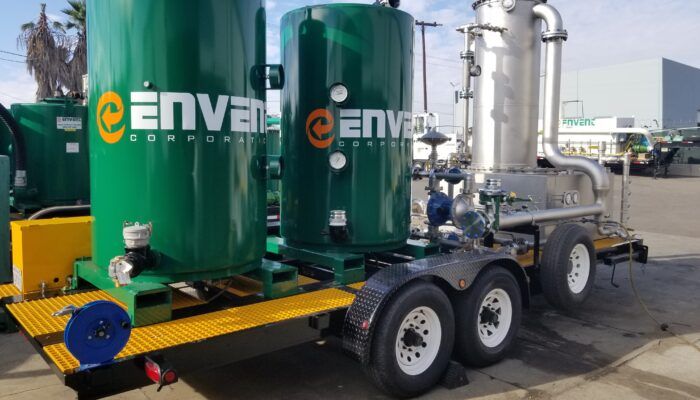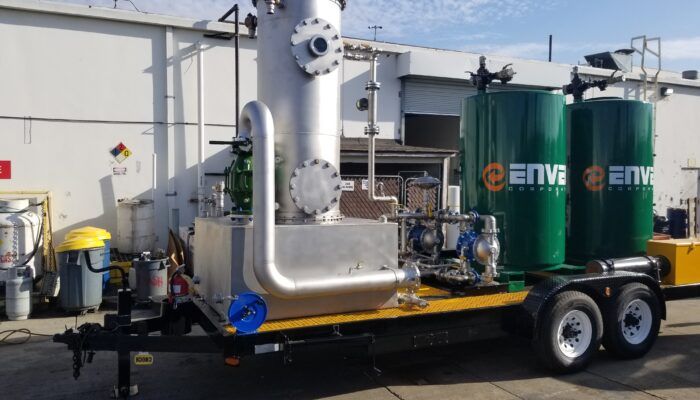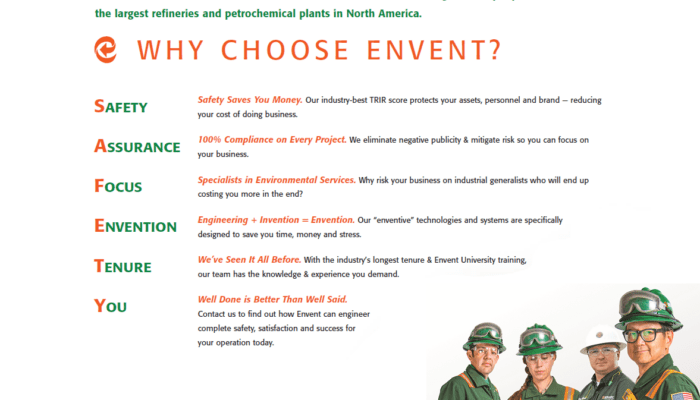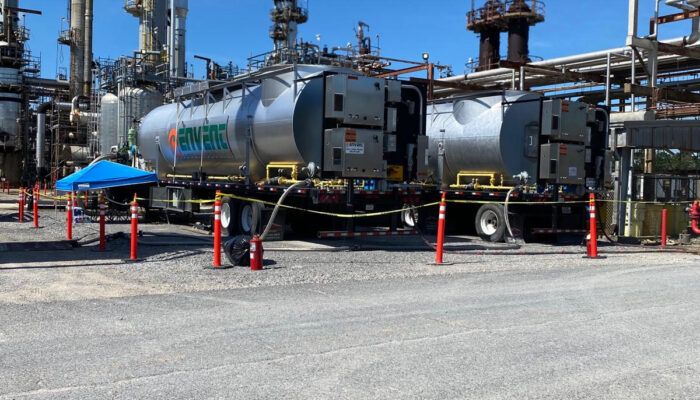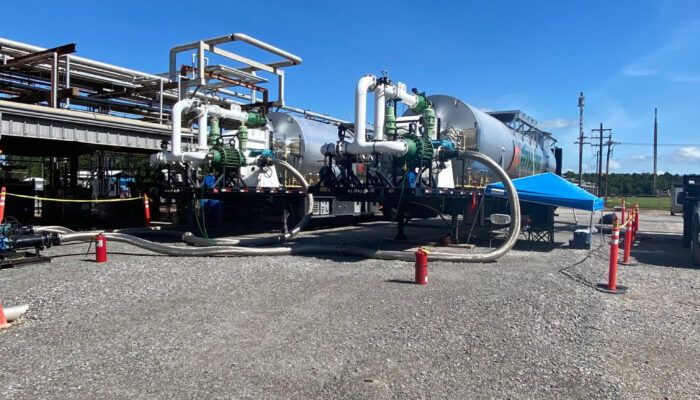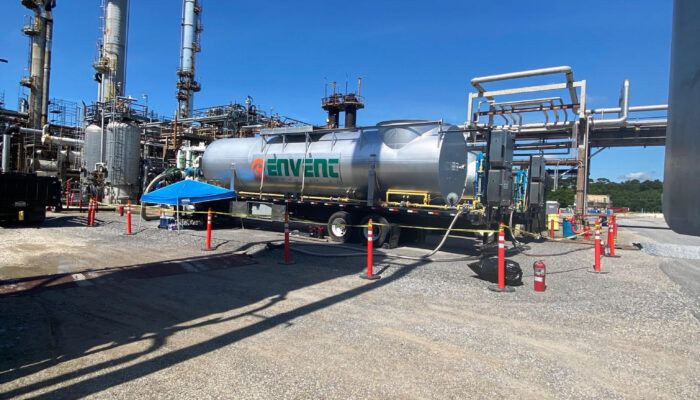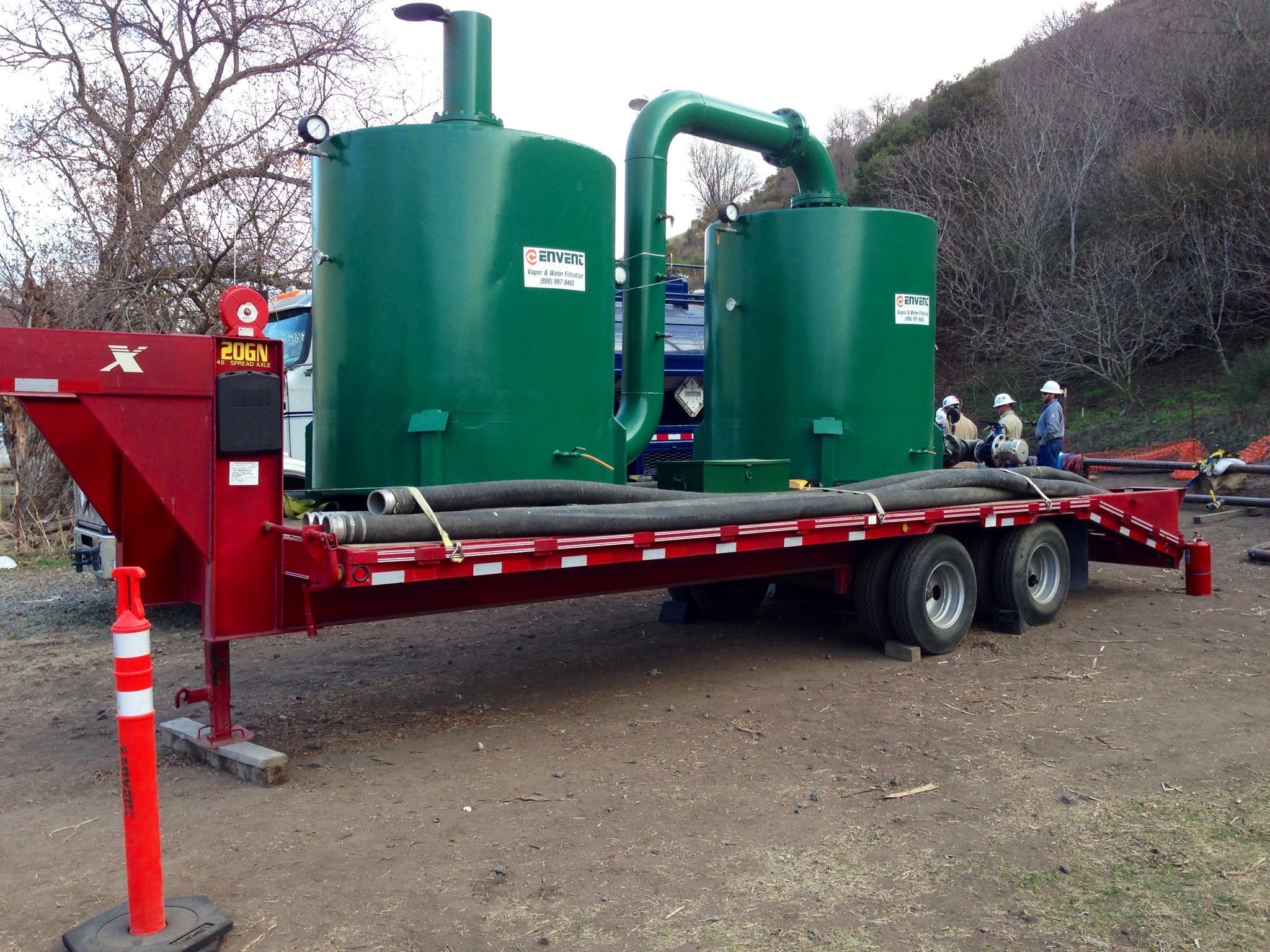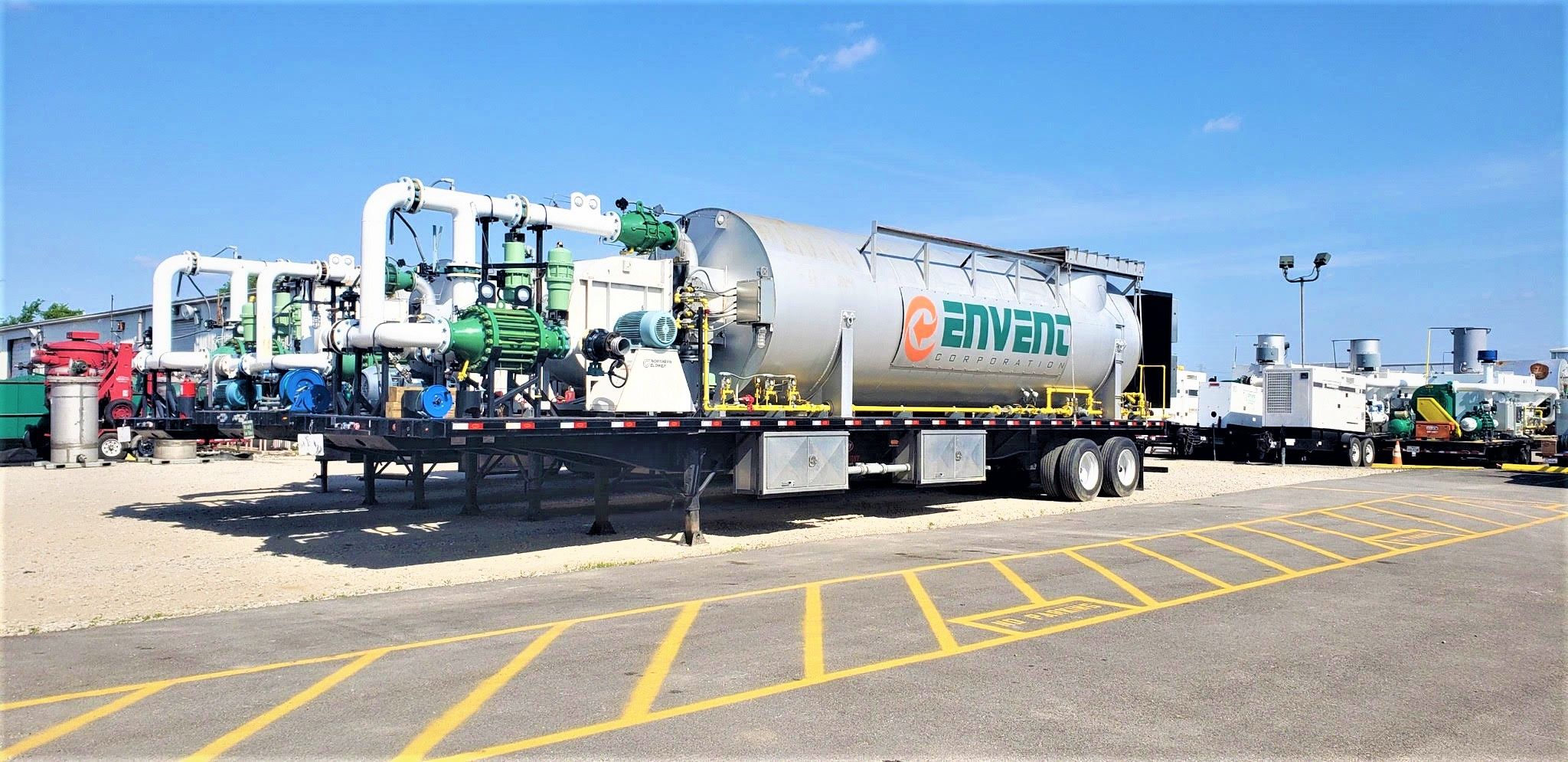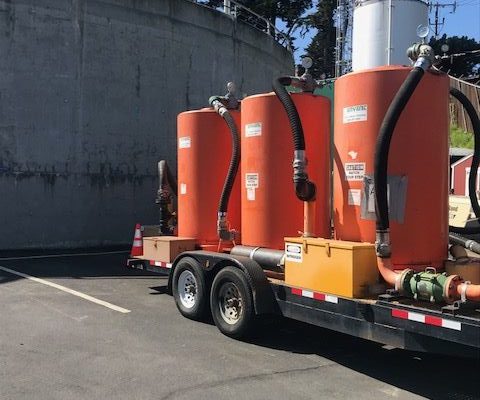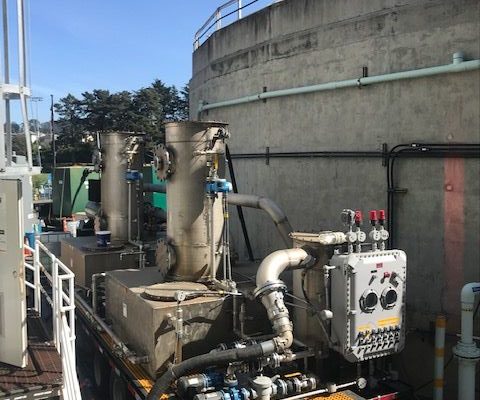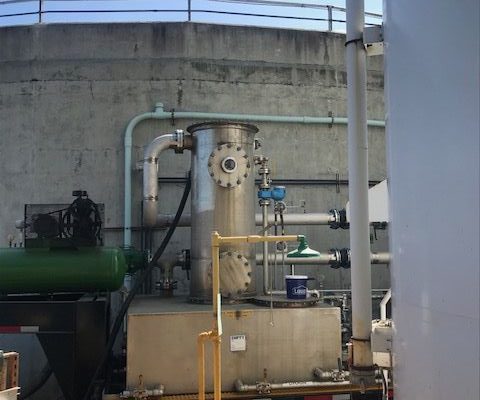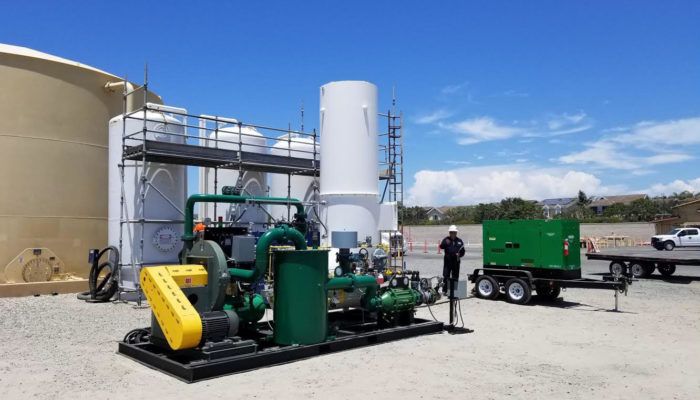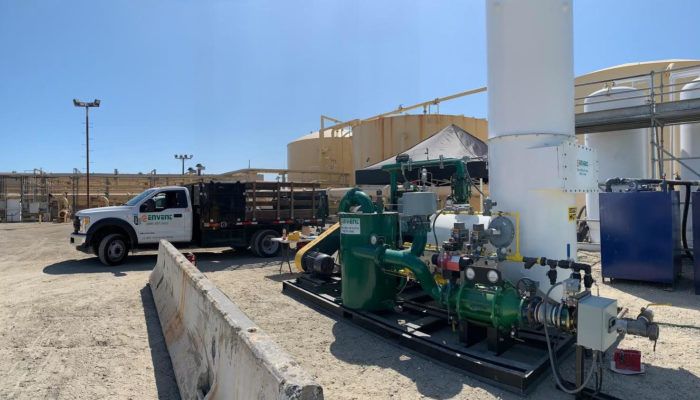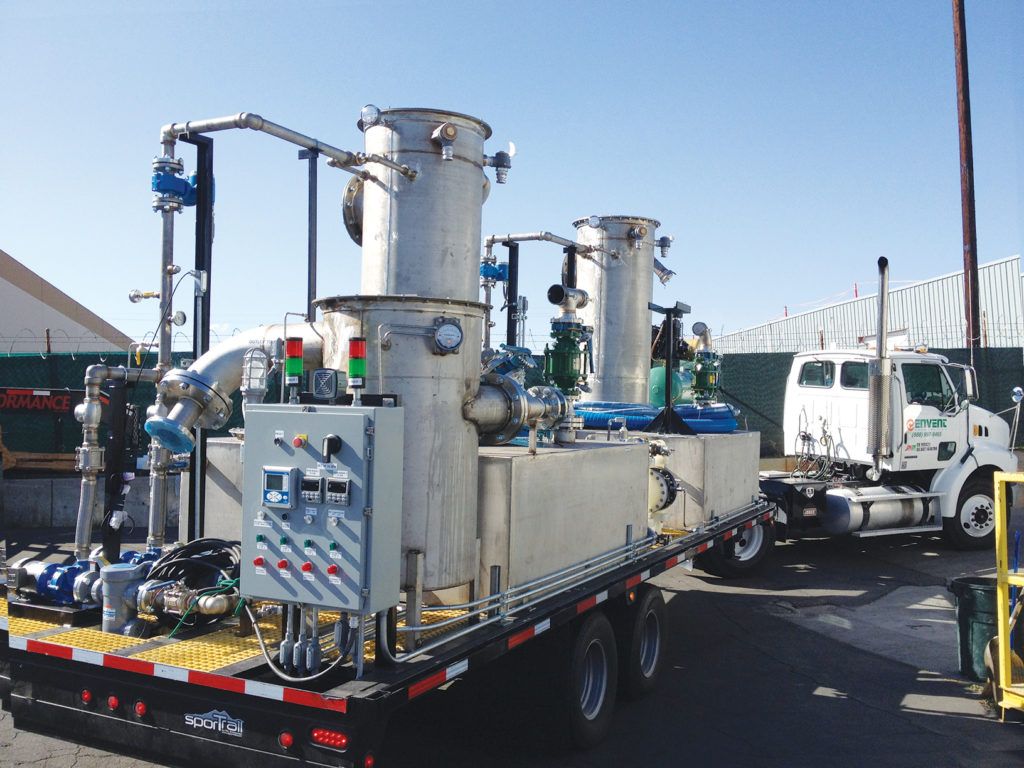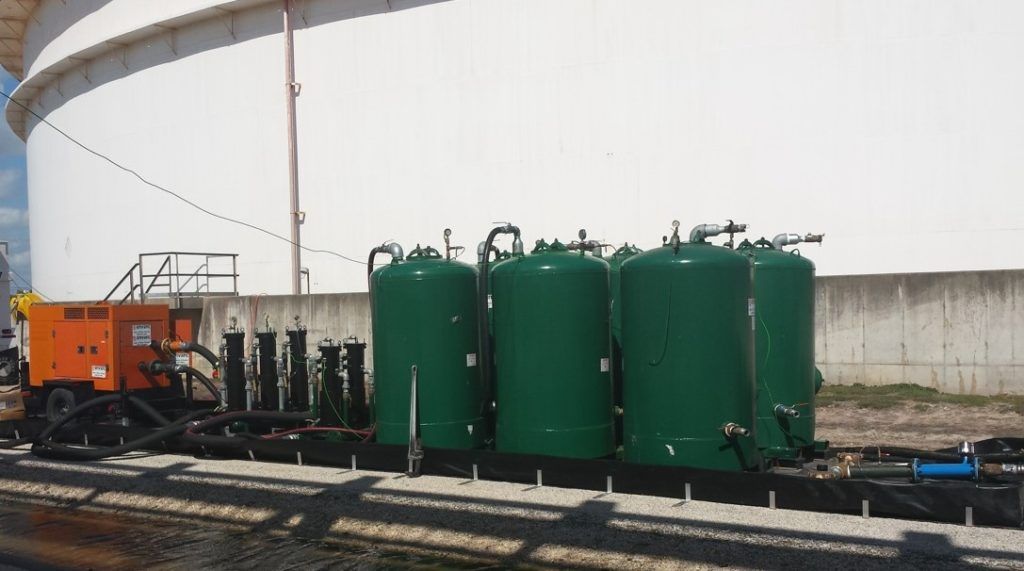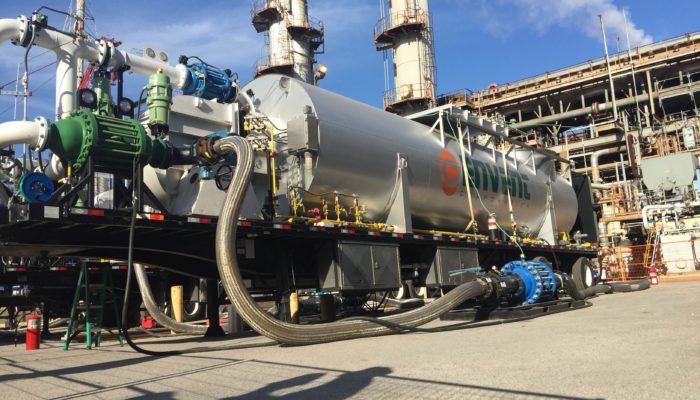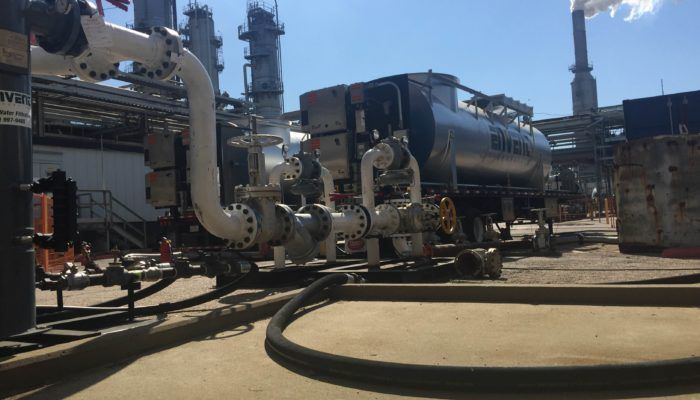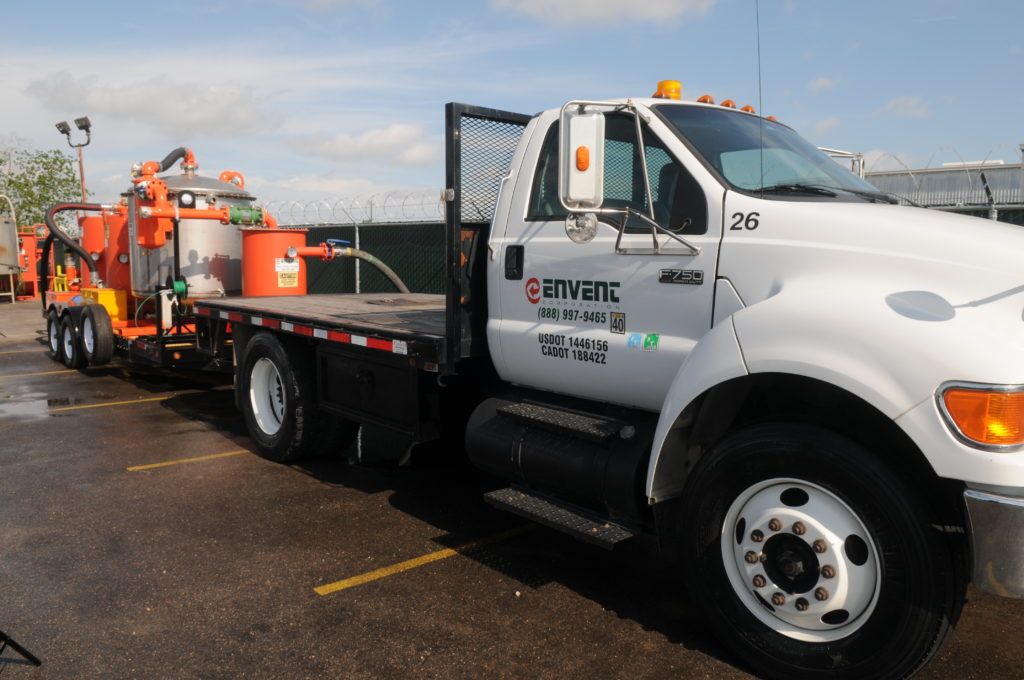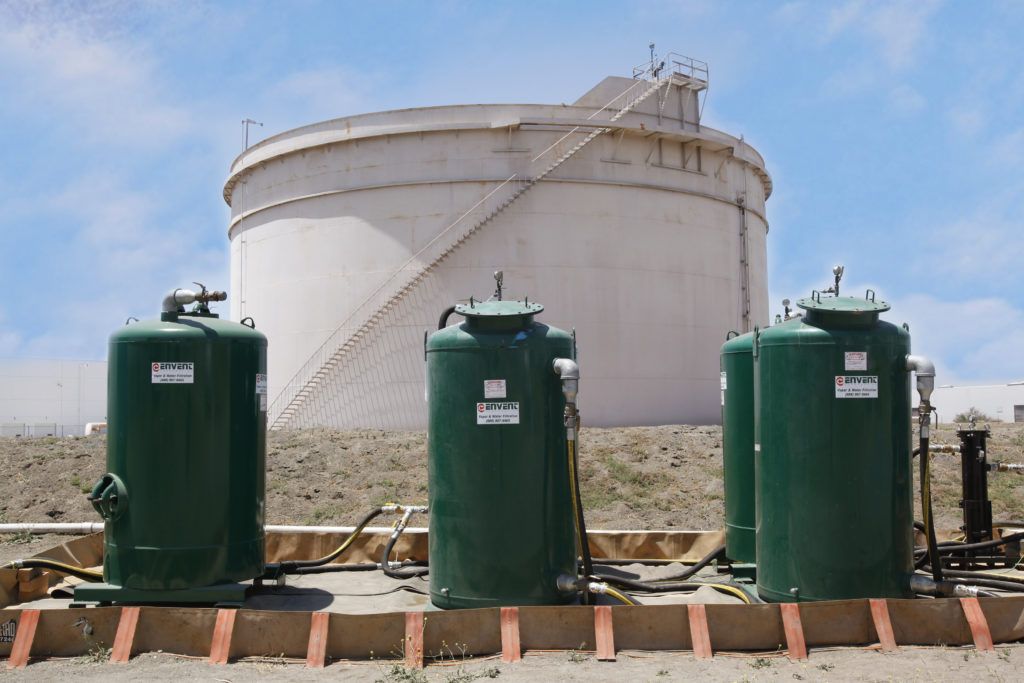Challenge
During a turnaround for an Olefins Unit, a customer tasked Envent with providing a vapor control system to process stray hydrocarbon vapors while their normal vapor recovery system was down for maintenance. The customer’s unit superheaters were to be shut down for three months, and without a proper solution in place, the customer would release extraneous VOCs into the atmosphere violating emissions regulations. Therefore, it was important that an effective, low-cost solution would be able to continuously remove VOCs for the full duration of the project.
Solution
Envent implemented a two-stage system for this vapor control project. In the first stage, Envent used a scrubbing system that utilized a liquid media and activated carbon to target VOCs. This was designed to strip low concentrations of VOCs from the customer vapor streams. Envent utilized a downstream blower to pull vapor through the scrubbing system. Not only did the blower direct flow to the scrubbers, but it provided a slight vacuum on the customer system to prevent excess gas buildup and pressure release to atmosphere. Two trains of scrubbers were set up so that once media became spent, Envent could divert flow to a scrubber with fresh media. During this process, Envent utilized an FID monitor to keep track of VOC concentration levels entering and exiting the scrubbers. After the first stage of maintenance was completed by the customer, VOC concentration levels increased significantly. Therefore, Envent switched over to a thermal oxidizer system for the second stage of the project. The thermal oxidizer is designed to handle high concentrations of VOCs and combust them at a 99.9% destruction efficiency. With its built-in blower, Envent could pull significant vacuum on the customer system while handling the increased concentration of VOC from the customer side. Envent continued operation of this system until the customer maintenance was complete and the Olefins-1 Unit superheaters were back online.
Benefit
This customer benefited from Envent’s solution in a variety of ways. First, the customer was able to avoid releasing VOCs directly into the atmosphere. The significance of this allowed the customer to stay in compliance with emissions regulations and prevent environmental damages. Secondly, Envent’s experienced crew enabled the customer to focus efforts on completing the superheater maintenance in a timely manner rather than waste time and energy manning an additional set of tasks. Envent maintained and operated the implemented system for several weeks safely without issue. Lastly, Envent’s solution was both effective and low-cost. The equipment provided was designed to meet the functions of the project without over bidding materials. Additionally, the complete reduction of stray emissions saves the customer money by avoiding fines from violations. Overall, Envent’s simple solution proved to be highly efficient and cost-effective, and the Olefins Unit project was completed safely and on-time.
